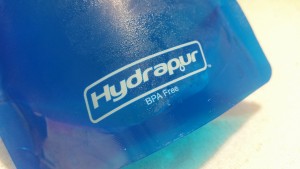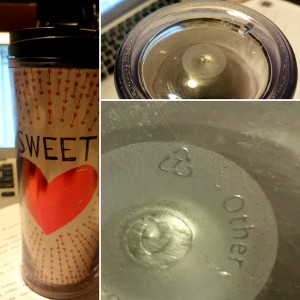The UBC campus has added more categorized waste bins and water bottle refill stations. This parallels an increase in advertisements about recycling and using reusable bottles such as this one (Source: Filter For Good Canada from Youtube), to convince people to steer away from one-time use plastic bottles. One of the first qualities I check for when purchasing water bottles is whether or not it’s “BPA free”. The widespread notion that BPA is harmful has made checking for its presence almost a reflex for the concerned parent or health savvy individual.
BPA, also known as bisphenol A, is an industrial chemical used in many retail packaging and various plastics. BPA can seep into water or food from its packaging and into our bodies. One of the effects of BPA includes disrupting a hormone, called estrogen, which protects females from rapid loss of bone tissue that eventually leads to fragile and brittle bones— a disease known as osteoporosis. Post menopausal women who already have low levels of estrogen and the elderly who have low bone densities, significant amounts of BPA may pose a faster onset of osteoporosis. This is one of many possible effects of BPA.

Normal Bone Matrix
Credit: Debbie Marshall. Wellcome Images
2003 Published:
Copyrighted under Creative Commons by-nc-nd 4.0

Bone with Osteoporosis
Credit: David Gregory & Debbie Marshall. Wellcome Images
2003 Published:
Copyrighted under Creative Commons by-nc-nd 4.0
Statistics Canada reported that 90% of the Canadian population had BPA in their urine. Despite the high levels of BPA found and its toxic nature, Health Canada reassured the public that BPA exposure from food packagings did not pose a health risk to the general population. To put this into context, a study by Kim and colleagues concluded that, although the subjects in the experiment had BPA in their urine, the link between BPA and characteristics of osteoporosis may be due to chance.
Even so, many companies have decided to stop using BPA and promote their “BPA free” products since the media magnified the dangers of BPA. A study by Cooper, Kendig and Belcher concluded that “BPA free” materials (Tritan copolyester, stainless steel and aluminum lined with EcoCare) are indeed free of BPA and suitable for consumer usage if manufacturer’s recommendations are followed. However, in various products labelled “BPA free” a substitute for BPA called BPS or BPF (also known as Bisphenol S or Bisphenol F) was actually used. Rochester and Bolden recently published a study stating that BPS and BPF are as active as BPA and can induce similar effects. In addition, Viñas and Watson concluded that BPS disrupts normal cell function.
I’m sure that many people, including me, choose to swap for “BPA free” water bottles to avoid the adverse effects; but as the media and various studies suggest, the real concern is not being addressed. “BPA free” water bottles make no promise to be safer than BPA-containing bottles.
Iris Liu


